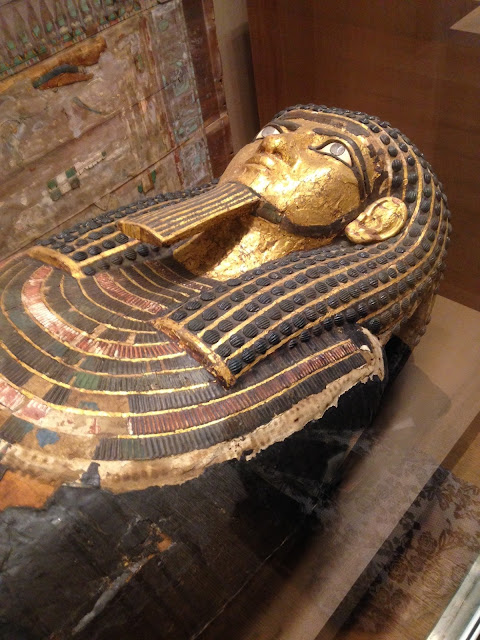Day 403 - Art of the New World
February 24, 2025
I'd passed through Gallery 626 a number of times, noting that it contains works of art from the Spanish colonies in the Americas but not really looking at any of these works. Today's visit to the gallery turned out to be a pleasant surprise: Many of the works, which deal with religious subjects and are largely by unidentified painters, were unexpectedly charming. They have a distinctive, naive quality and characteristics that we associate with self-taught artists: simplified forms, flat lighting, a lack of single-point perspective
"Our Lady of Valvanera," painted around 1770-1780 by an unknown artist in Cuzco, is a case in point. The very large canvas measures perhaps 10 feet long and 7 feet high and, unusually, is unframed. It depicts the discovery of an image of the Virgin and Child within the hollow of a tree by Nuno Ortiz, a thief turned hermit. Mary wears a dress whose elaborate embroidery is indicated with gold paint; both the holy figures wear large gold crowns. The hermit kneels on a grassy swath strewn with flowers, including lilies and roses, symbols of the Virgin. Long-necked white birds (ibises? geese?) forage in the grass, while three brightly plumaged parrots perch in the tree. In the middle ground is a city with a domed, red-roofed church with statues of religious figures in its niches, while in the background appears what seems to me a fantastic mountainous landscape. The legend says that the landscape evokes the Spanish region of La Rioja, suggesting to me that the work was commissioned by a patron who came from that area. I know that the painting was created as a testament to faith, but looking at it just makes me feel happy.




Comments
Post a Comment